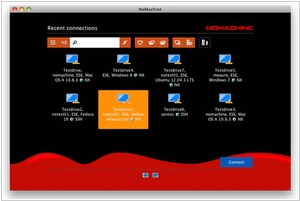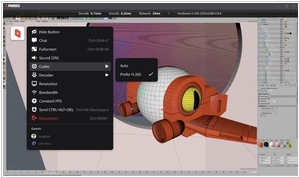NoMachine vs Parsec
March 08, 2025 | Author: Michael Stromann
7★
NoMachine is the fastest and highest quality remote desktop you have ever tried. Reach your computer on the other side of the world in just a few clicks. Wherever your desktop is, you can access it from any other device and share it with who you want. NoMachine is your own personal server, private and secure. What’s more, it’s free.
12★
Parsec is a remote desktop you'll actually love. Connect to work or projects wherever you are, whenever you want.
See also:
Top 10 Remote Support software
Top 10 Remote Support software
NoMachine and Parsec are two remarkably clever bits of software, both of which allow you to access a computer that isn't in the same room, city or possibly even planet as you. They are designed to make it feel as though you are sitting right in front of a machine that, in reality, is miles away and probably running something completely different from what you intended. Both work across multiple operating systems, both are impressively fast and both manage to convince your brain that your keyboard is, in fact, controlling something that exists elsewhere in time and space. If this isn't wizardry, then it's at least some very determined mathematics.
NoMachine hails from Italy and has been around since 2003, which in software years is roughly the age of a very distinguished tortoise. It was built for serious remote computing, meaning it lets you not only see and control a remote machine but also shuffle files, print things and generally behave as though you’re sitting at a desk that happens to be located in a different dimension. It uses something called NX technology, which sounds suspiciously like a spaceship engine but is, in fact, a very efficient way of compressing data so that your screen updates faster than you can say, "Why isn't my internet working?" It is particularly popular with people who do very important things on Linux machines while drinking strong coffee.
Parsec, on the other hand, is much younger, having emerged in 2016 from the U.S. and immediately declared, "Games! We shall focus on games!" And so it did. It specializes in making remote gaming feel as smooth and lag-free as possible, which, considering that the internet still occasionally decides to stop working just to spite you, is no small feat. It doesn’t bother with things like printing or enterprise security because, quite frankly, that would only get in the way of playing very fast games with very high frame rates. It is adored by people who want to game, collaborate on creative projects or just prove that, yes, you can play an entire multiplayer session with a friend located three time zones away, provided neither of you sneezes near your router.
See also: Top 10 Remote Support software
NoMachine hails from Italy and has been around since 2003, which in software years is roughly the age of a very distinguished tortoise. It was built for serious remote computing, meaning it lets you not only see and control a remote machine but also shuffle files, print things and generally behave as though you’re sitting at a desk that happens to be located in a different dimension. It uses something called NX technology, which sounds suspiciously like a spaceship engine but is, in fact, a very efficient way of compressing data so that your screen updates faster than you can say, "Why isn't my internet working?" It is particularly popular with people who do very important things on Linux machines while drinking strong coffee.
Parsec, on the other hand, is much younger, having emerged in 2016 from the U.S. and immediately declared, "Games! We shall focus on games!" And so it did. It specializes in making remote gaming feel as smooth and lag-free as possible, which, considering that the internet still occasionally decides to stop working just to spite you, is no small feat. It doesn’t bother with things like printing or enterprise security because, quite frankly, that would only get in the way of playing very fast games with very high frame rates. It is adored by people who want to game, collaborate on creative projects or just prove that, yes, you can play an entire multiplayer session with a friend located three time zones away, provided neither of you sneezes near your router.
See also: Top 10 Remote Support software





